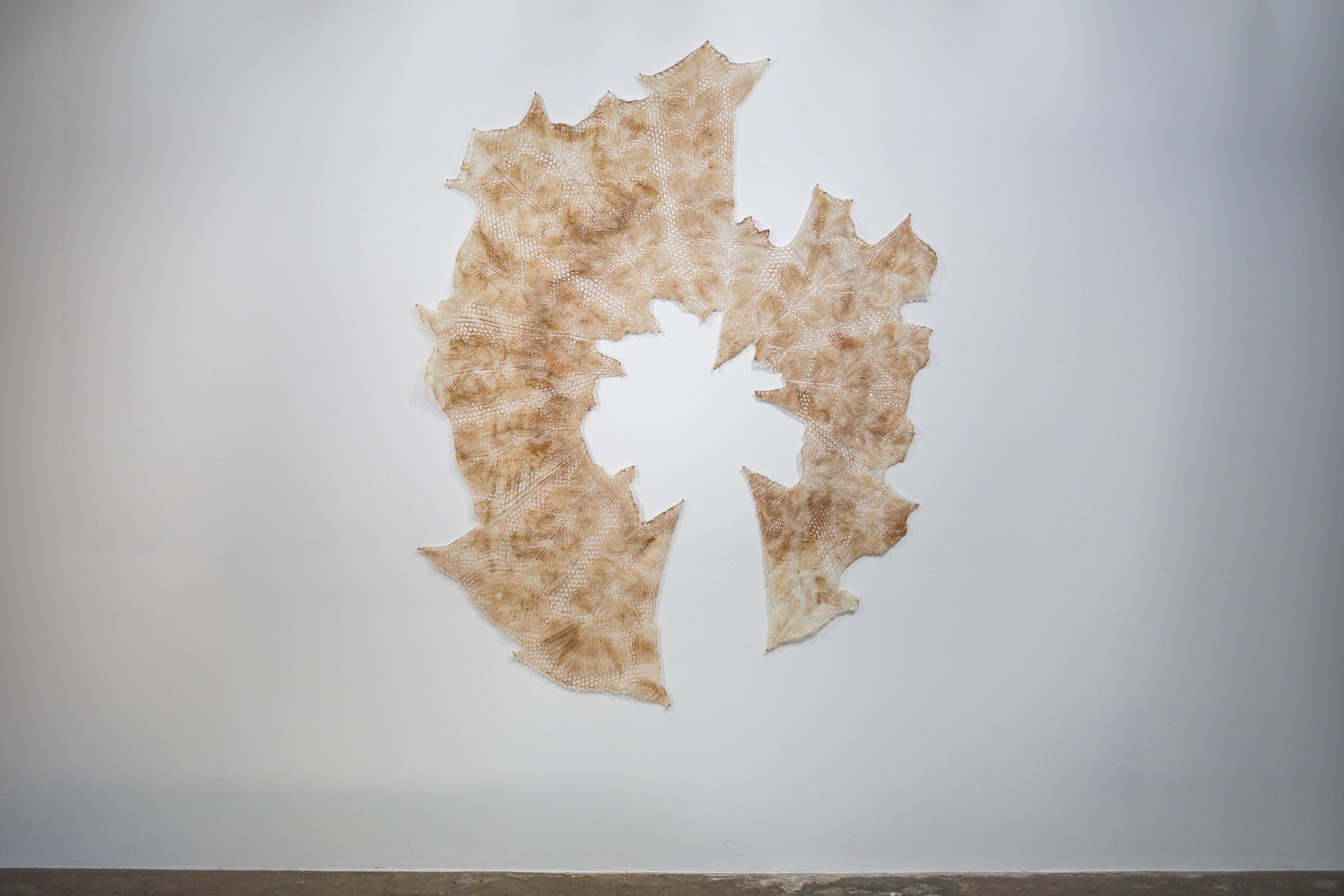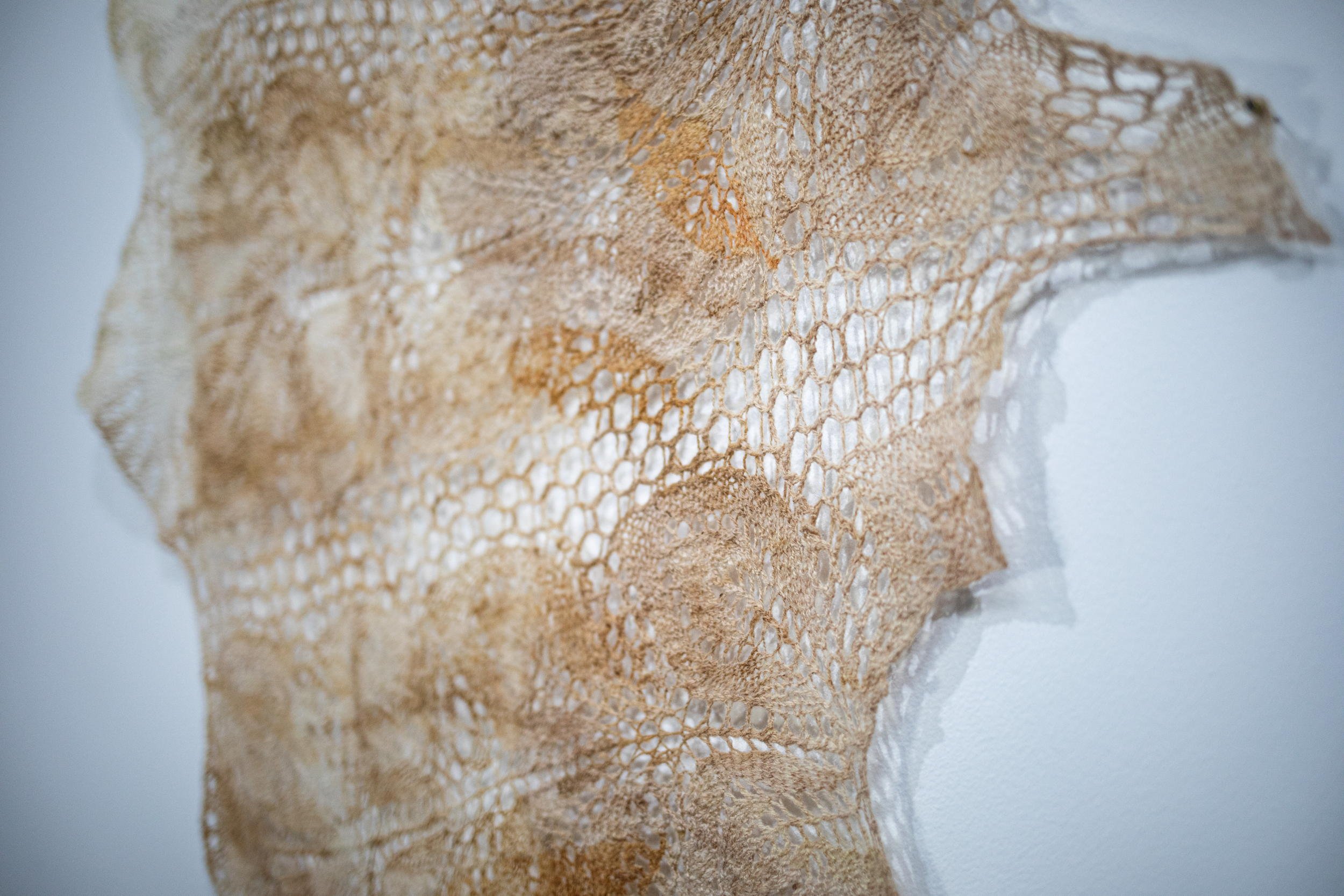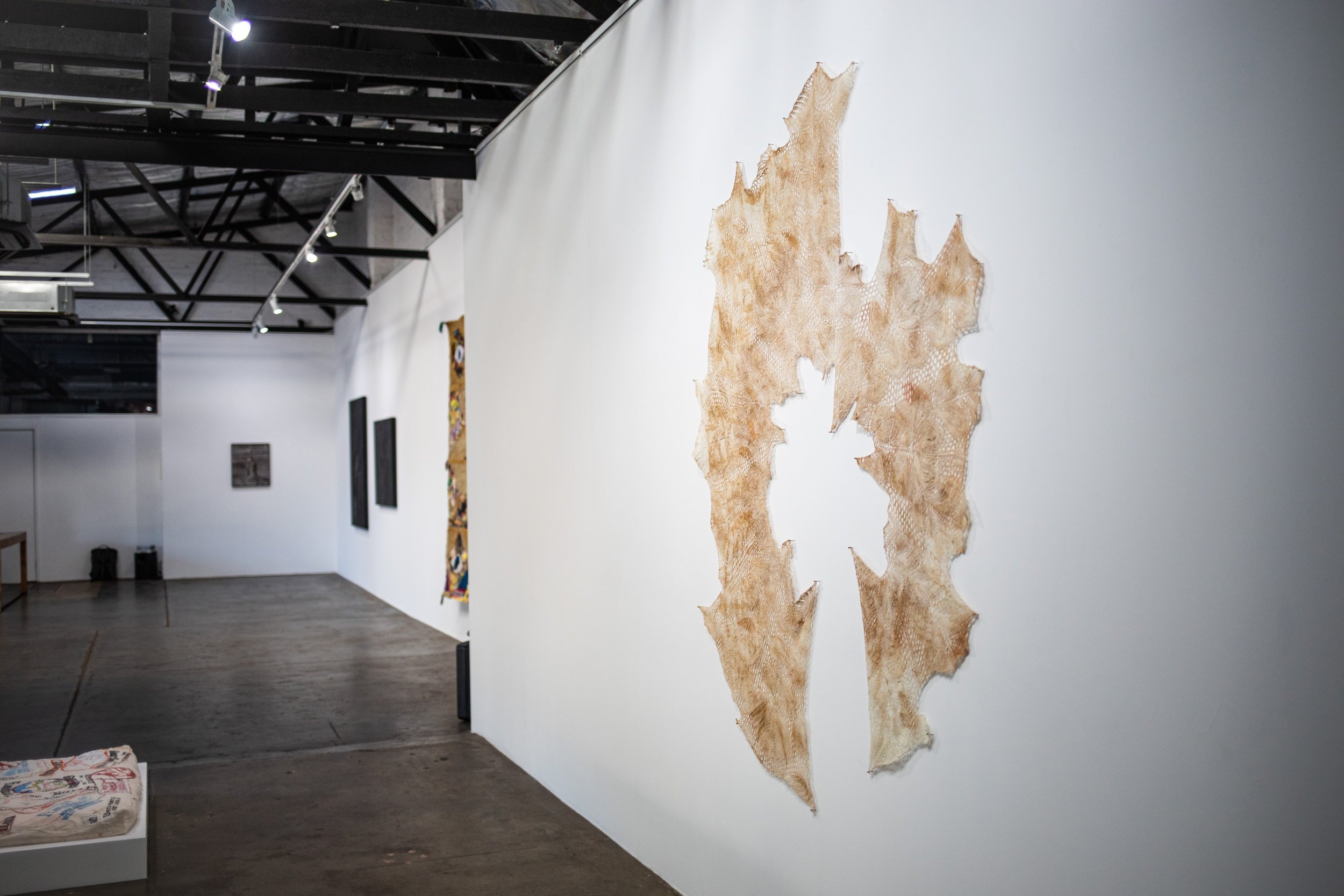


Unsettled Mothers, shown at HERENOW2021
an exhibition curated by Rose Barton as part of the Indian Ocean Craft Triennial 2021
5th to 19th November 2021, There is! gallery, Northbridge, Perth
I was going to Kalgoorlie for the weekend, which from Denmark is a long time on bus and train. Good time for making. Knitting with fine yarn is ideal for long journeys. It is small, quiet, and is worked easily in the lap. Lace is fascinating to knit, especially making a circular piece. The knitting starts from the centre and by using a few simple stitches grows outwards for as long as yarn and patience last.
Lace, especially knitted lace, is often seen as the epitome of decorative femininity. To make lace is to pass time in unproductive busy-work. But lace persists. Its fragility and fineness is admired due to the craftsmanship and the patience needed for the many hours of work it takes to make even small pieces. The history of hand lace making is often connected to women’s poverty and exploitation. Yet it has also been a source of economic independence for lace makers who used only a few tools and materials, and worked at home while looking after the family.
Most knitted lace styles are made of repeats of small motifs that form an overall lacy fabric, worked in fine wool to make shawls. In the nineteenth century a more complicated and pictorial style developed in Germany, with large motifs on a background of openwork. These were usually made into doilies or tablecloths, ideally suited to using fine, smooth, factory-spun cotton thread. Rarely were the designers named, even though their patterns were published and widely made. An exception was Herbert Niebling, whose life-long specialisation in knitted lace patterns is still recognised today. Perhaps it is no coincidence that he was one of the few men working in the field. Niebling was known for his detailed floral patterns inspired by nature.
Lace knitting can be both an act of defiance and conformity. Its fragility and impracticality correspond to ideals of delicate, decorative femininity. In the past, many women were kept out of the ‘real’ world of commerce and politics and expected to pass their time making fripperies to decorate the private space of home. Yet, as anyone who has immersed themselves in learning and practicing a craft knows, the craft becomes a whole world of knowledge and expertise, of ever increasing challenges which are immensely satisfying and are practised within a network of peers and competitors. To master a craft such as lace knitting, which is done for its own sake and which gives personal satisfaction, can be an act of autonomy in an otherwise controlled and limited life.
When I think about the fifteen women who came to Australia from the UK in the 19th century who were my ancestors I wonder if they had time to be creative and to make for their own pleasure. Perhaps the few who had servants and wealthy husbands could. What about those who were indentured servants, working not only for their own family’s survival, but for their masters as well? Would they have had the time and the materials to make something for themselves? Lace, at least, needs only a small amount of thread, and a few very basic tools: needles, hook, shuttle. Small enough to tuck into a pocket and to work on in between other tasks perhaps. I also think of the Indigenous women whose lives were devastated by the colonisers and whose own crafts and culture were overrun. Even if these stories are lost or hidden, the events can be honoured.
I found a fine merino yarn that I had spun from a local fleece during the first pandemic lockdown and one of Niebling’s charts of branching leaves and flowers. On the long trip to Kalgoorlie I knit a lacy representation of my ancestresses’ life spans. Back in Denmark, I used Karri bark to dye the European lace flowers with a colour of Menang Noongar boodja, of tree bark and laterite.
HERENOW21 description:
Katie Breckon, Banjyi “Pansy” Cheedy, Jacky Cheng, Ruth Halbert, Stuart McMillan, Clare Peake, Curated by Rose Barton
An exhibition of regional Western Australian artists whose practice touches craft methodologies and mediums, whilst also pushing at traditional boundaries and unending the negative connotations of the word craft.
The annual HERENOW exhibition showcases some of the most exciting and innovative work in Western Australia, with an emerging curator appointed to offer fresh perspective and insight on contemporary art practice.
Spanning textiles, ceramics, weaving, paper, sculpture, metal and timber work, and digital elements, the artists draw attention to the role of craft in socio-political, cultural and environmental healing in a contemporary landscape. Dispersed across the state, the artists are bound together by their collective questioning of the individual self, the shared self, and it’s relationship to place. Dispersion highlights a diverse group of artists from across the state, from Denmark in Minang Country, to Derby in Nyikina Country.